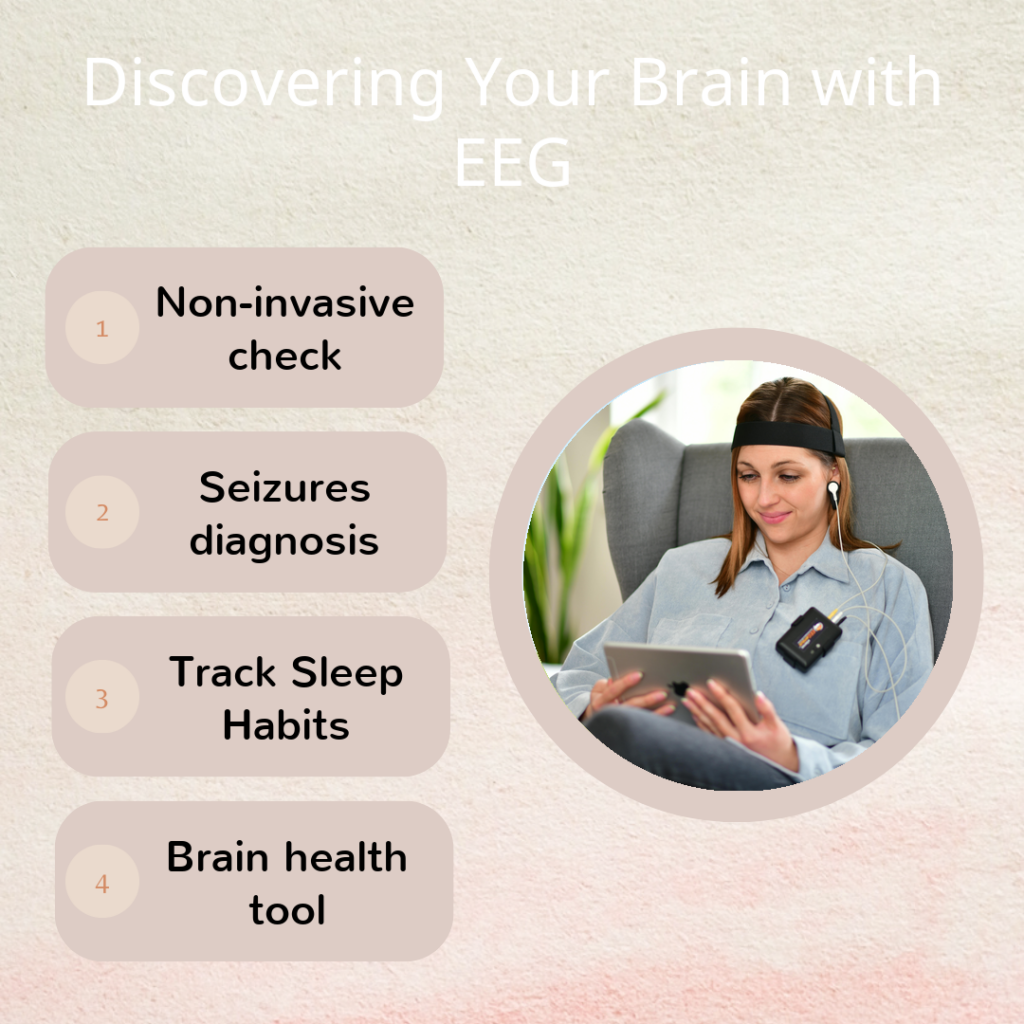The World Inside Your Brain: An Introduction
Have you ever wondered how doctors figure out what’s going on inside your brain? Meet the electroencephalogram, known as EEG for short. Think of EEG as a trusty reporter, bringing back vital stories about your brain’s health. It’s amazing because it shows what’s happening without any surgery or pain. That’s why EEG is so important in figuring out neurological disorders, such as seizures and sleep issues. Need to check how your brain’s doing? EEG is the go-to tool!
Understanding EEG: The Basics
This thing called EEG is pretty cool. It’s a test that shows what’s happening electrically in your brain. How? By putting tiny sensors on your head to listen and record the brain’s waves without causing any discomfort. It’s safe, quick, and you can go back to your activities right after it’s done. It doesn’t hurt or involve any scary stuff. That’s why we say it’s non-invasive and friend-maker for patients.
- Clean Recording: Sensors (tiny ones) sit on your scalp.
- Quick Results: Gives a fast reading of brain activity.
- Safe: No harm done, just records like a silent movie camera.
How EEG Measures Brain Activity
Your brain is like a big electrical center, sending out signals non-stop. EEG brain activity uses those signals to see what’s happening in there. These signals travel as waves. Experts can look at these waves and tell the difference between what’s normal and what’s not so normal. They’re like brain detectives, sniffing out clues to your health.
Exploring EEG Waves: What They Reveal
The waves come in five types: Delta, Theta, Alpha, Beta, and Gamma. Each tells a story about your mind’s state.
- Delta waves are deep and slow, like when you’re sleeping.
- Theta is for light sleep or daydreaming.
- Alpha shows up when you’re calm, like during meditation.
- Beta pops up when you’re actively thinking or problem-solving.
- Gamma is super fast and relates to high-level info processing.
Changes in these waves can signal changes in your brain’s health.
EEG for Seizures: A Closer Look
If someone has seizures, an EEG for seizures can help figure out the type. Different seizures cause different wave patterns. Knowing the type helps doctors pick the right treatment. It’s like having the right map when you’re lost. EEG steps in, sheds light on what’s happening, and makes sure the treatment is spot on.
The Role of EEG in Sleep Studies
Ever wondered what happens when you’re sleeping? EEG for sleep studies is on it! It helps track how you sleep and whether any disorders—from sleep apnea to insomnia—are present. Understanding this helps manage neurological issues linked to sleep, giving you better rest and health.
Long-term Monitoring: EEG and Tracking Neurological Changes
Keeping track of your brain’s journey is key. Regular EEG tests can monitor whether things are improving or if more attention is needed. This ongoing watch can help make treatment plans that stretch over the long term, keeping you better informed about your neurological health.
Integrating EEG with Other Diagnostic Tools
EEG doesn’t work alone. It plays nicely with others like MRIs and CT scans. By combining results, doctors get a fuller picture of your brain’s health, making diagnostics more comprehensive and accurate.
Conclusion: The Future of EEG in Neurology
Looking forward, EEG is crucial in diagnosing and handling brain-related conditions. Its simplicity and effectiveness make it a go-to tool that promises timely detection and better health management. Always remember, easy access to this tech makes staying ahead of neurological issues simpler.
Ready to Uncover Your Brain’s Potential?
Think your brain health could use a check? Chat with your doctor about getting an EEG. It’s a step towards uncovering the mysteries of your mind and keeping it healthy and happy! 🚀 They’ll guide how an EEG can help get to know your brain better.

